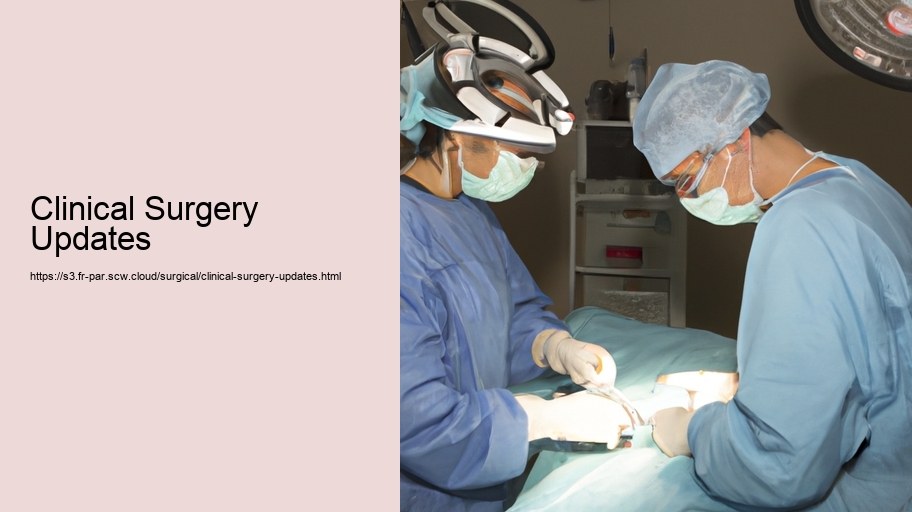Clinical surgery, as a dynamic and ever-evolving field, has experienced a myriad of updates and advancements that have dramatically transformed the landscape of patient care. These updates have been driven by a combination of technological innovations, improved surgical techniques, and a deeper understanding of human pathophysiology.
One of the most significant advancements in clinical surgery has been the widespread adoption of minimally invasive procedures. Laparoscopic and endoscopic techniques have revolutionized many types of surgery, reducing patient recovery times, decreasing postoperative pain, and minimizing the risks associated with large incisions and open procedures. Surgeons can now perform complex operations with a few small incisions, using specialized instruments and cameras to view and manipulate internal structures. This has not only improved outcomes but has also led to a significant reduction in healthcare costs due to shorter hospital stays and more rapid return to normal activities for patients.
Robotic surgery represents the next frontier of minimally invasive procedures. Robots, such as the da Vinci Surgical System, provide surgeons with enhanced precision and control, allowing for even greater finesse in surgical maneuvers. The increased dexterity and 3D visualization have expanded the range of procedures that can be performed using this technology. Moreover, the field of telesurgery has emerged, wherein surgeons can operate on patients over long distances using robotic interfaces, which could revolutionize access to surgical expertise for remote or underserved populations.
Advances in surgical materials and techniques have also improved patient outcomes. For instance, the development of new surgical adhesives and sealants has reduced the need for sutures and staples, which can minimize tissue trauma and promote faster healing. Additionally, the use of absorbable biomaterials in scaffolds and meshes has enhanced tissue regeneration and reduced the risk of long-term complications associated with non-degradable implants.
Surgical oncology has seen substantial updates as well, particularly in the precision of cancer surgeries. Advances in imaging technologies, such as intraoperative MRI and fluorescence-guided surgery, have allowed surgeons to more accurately distinguish between healthy and cancerous tissues, leading to more effective tumor removal while sparing vital structures. This precision, combined with a better understanding of cancer biology, has led to the development of more tailored surgical approaches that can be integrated with other treatments like chemotherapy and radiation for a comprehensive approach to cancer care.
In the realm of transplantation, innovations in immunosuppressive therapies and organ preservation have significantly improved success rates. The advent of new drugs that are more effective and have fewer side effects has resulted in better long-term outcomes for transplant recipients. Furthermore, the development of machine perfusion systems for organ preservation has extended the viability of organs outside the body, increasing the pool of available organs and giving more patients access to life-saving transplants.
The integration of digital health technologies into clinical surgery has also been a game-changer. Electronic health records (EHRs) have improved the continuity of care by providing surgeons with immediate access to patient histories, imaging, and lab results. Moreover, wearable devices and remote monitoring have extended the care continuum beyond the hospital, allowing for real-time tracking of patient recovery and early detection of potential complications.
Lastly, the emphasis on evidence-based practice and quality improvement has led to the standardization of surgical protocols to reduce variability in patient care. Clinical registries and databases have been developed to track outcomes and identify best practices, which have served as benchmarks for surgical performance and have driven quality improvement initiatives across the surgical spectrum.
In conclusion, clinical surgery updates have been characterized by a relentless pursuit of innovation, driven by the ultimate goal of improving patient outcomes. The integration of new technologies and techniques, bolstered by a robust framework of research and quality improvement, has set the stage for a future where surgery is safer, more effective, and more accessible than ever before. As the field continues to evolve, it is imperative that surgeons and healthcare professionals remain committed to lifelong learning and adaptation to ensure that these advances translate into better care for patients around the world.
